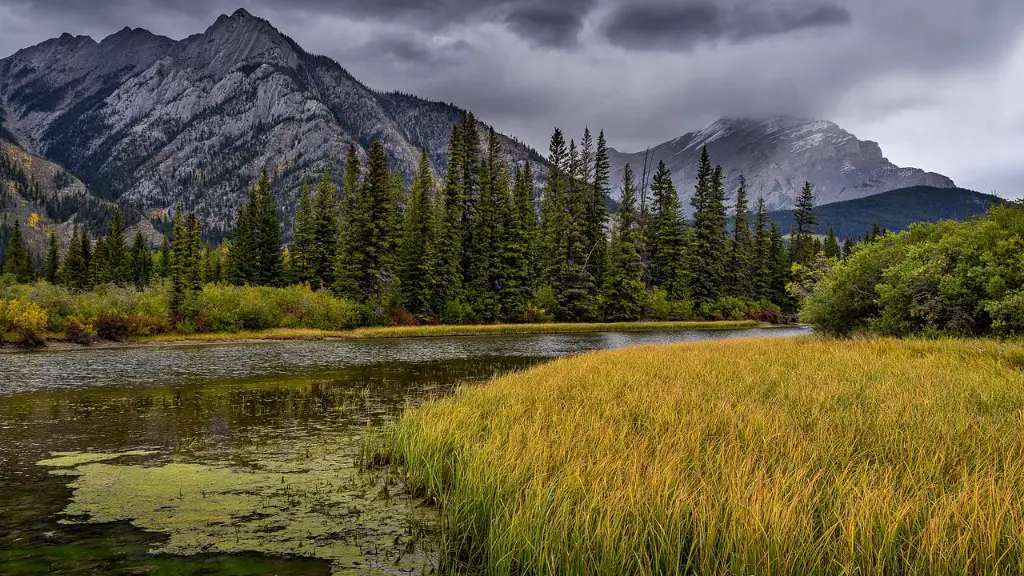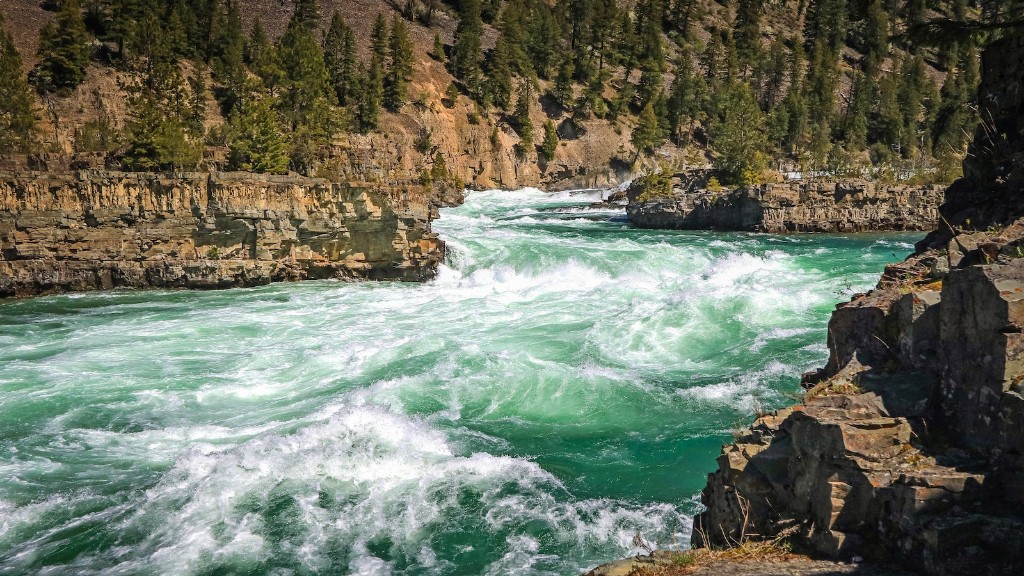Things have changed in the Yangtze River in China over the years due to the implementation of several dams. The Yangtze River is the longest river in Asia and it runs through China and has become an integral part of the country. It is one of the most important rivers in the world and its water is used for drinking, irrigation, and electricity production.The question is, “Does the river have dams?” The answer is yes, the river does have a number of dams and the first was the Gezhouba Dam which was built between 1970 and 1988. The purpose of the dam was to control the flooding that often caused destruction to the local communities. The dam also generates power from the river’s flow and increases the water supply for the region.
The Three Gorges Dam, which is the largest dam in the world, is another important dam on the Yangtze River. It was built between 1994 and 2006 and its purpose is to provide electricity to millions of people in China. The dam has also had an impact on the environment of the Yangtze River as it has changed the flow of the river and affected the biodiversity of the region. The dam has caused displacement of people, destruction of habitats, and changes to the water supply of the region.
The Yangtze River is being dammed to help control flooding and to generate power. However, there are also environmental consequences due to the damming. For example, sediment that is normally carried downstream by the river is blocked by the dams, which can have a negative effect on the aquatic ecosystem. Additionally, the dams also block the migration of fish, which can have an impact on the species that are dependent on the river for food.
Experts have different opinions about the effect of damping the Yangtze River. Some people believe that damming the river is an important way to control flooding and generate electricity that is needed to power the country. Others, on the other hand, believe that the environmental consequences outweigh the benefits of having a dam on the river. They argue that the dams cause destruction of habitats and the displacement of people and they have a devastating effect on the ecosystem of the river.
Dams may be essential for the economic development of a country, but they also come with many environmental consequences. It is important to consider all of the consequences and benefits before deciding whether to build a dam on a certain river. Many experts believe that in the case of the Yangtze River, the benefits of having a dam outweigh the risks, but it is important that the dams are managed in a way that minimizes the negative impacts.
Effects of Yangtze River Damming on Displacement of People
The Three Gorges Dam along the Yangtze River has led to the displacement of more than 1 million people. It was estimated that the Three Gorges Dam project would lead to the displacement of over 1 million people in the region, mainly farmers and fishermen who rely on the river for their livelihoods. As a result of the dam, the river and its tributaries have been completely blocked and the people have been forced to relocate to nearby cities and towns. While the government has provided resettlement assistance to the affected communities, the people who have been displaced often struggle to adjust to their new lives and their losses have been immense.
In addition to the displacement of people, the dam has also caused destruction of habitats. The flooding of the area has caused the destruction of forests, wetlands, and other ecosystems, which has had a devastating effect on the local biodiversity. The destruction of habitats has also had an impact on the local people who rely on the resources of the area for their livelihoods.
The displacement of people, destruction of habitats and changes to the water supply due to damming of the Yangtze River is a severe problem that needs to be addressed. The Chinese government should focus on strategies for mitigating the negative impacts of these projects and providing resettlement assistance to the affected communities.
Does the Damming of the Yangtze River Provide Economic Benefits?
The damming of the Yangtze River has had an impact on the economic development of the region. The dams have been responsible for generating electricity and providing water to the population. The construction of the dams and the associated infrastructure has created thousands of jobs and has contributed to the economic growth of the region. Additionally, the dams have helped to reduce the frequency and intensity of flooding in the region, which has had a positive impact on the local economy as well. The electricity generated by the dams is also used for a variety of purposes, including providing power to cities and towns along the river.
However, it is important to remember that the economic benefits of the dams come with a cost. The construction of the dams has caused the displacement of people and the destruction of habitats, and these costs must be taken into account when assessing the economic impacts of the dams. Additionally, the costs associated with operating and maintaining the dams can be significant, and it is important for the government to ensure that these costs are not passed onto the local population.
The benefits and costs associated with the damming of the Yangtze River must be carefully weighed to determine if the economic benefits outweigh the costs. In the long run, the economic benefits of the damming projects may outweigh the costs, but only if the government takes steps to ensure that the costs are minimized and the benefits are maximized.
The Impact of the Yangtze River Damming on Water Supply
The damming of the Yangtze River has had an impact on the water supply in the region. The dams have been responsible for increasing the water supply for drinking and irrigation purposes. Additionally, the electricity generated by the dams has allowed for the development of industries and increased economic activity in the region, which has resulted in increased water consumption. This has put strain on the water resources of the region, as the demand for water has increased.
The situation has been further exacerbated by the fact that many of the dams along the Yangtze River are aging and the quality of the water has been declining due to a lack of maintenance. As a result, the water supply has become increasingly polluted, which has had a negative effect on the health of the population. Additionally, the dams have caused changes to the flow of the river, which has had an impact on the aquatic ecosystem of the region.
The Chinese government must take steps to address these issues and ensure that the water resources of the region are managed in a sustainable way. This includes taking steps to reduce the pollution of the water, improve the maintenance of the dams, and ensure that the water supply is sufficient to meet the needs of the population. Additionally, the government must ensure that the aquatic ecosystem of the region is protected from further damage.
What Measures Need to Be Taken By the Government?
The government must take a number of measures to address the impacts of the damming of the Yangtze River. First, the government must focus on strategies for mitigating the environmental consequences of the damming. This could include taking steps to reduce the pollution of the water, improve the maintenance of the dams, protect the aquatic ecosystem of the region, and ensure that the water supply is sufficient to meet the needs of the population.
Second, the government must focus on providing resettlement assistance to the affected communities. This could include providing housing, job opportunities, and other resources to those who have been displaced due to the damming of the river. It is also important for the government to develop strategies for helping people adapt to their new lives and for providing them with the support they need in order to make the transition.
Finally, the government must ensure that the economic benefits of the damming projects are maximized and the costs are minimized. This could involve developing strategies for increasing revenue from the electricity generated by the dams and ensuring that the costs associated with operating and maintaining the dams are not passed onto the local population. Additionally, the government must ensure that the water resources of the region are managed in a sustainable way.
What Solutions Can Be Proposed to Minimize the Negative Impacts of the Yangtze River Damming?
There are a number of solutions that can be proposed to minimize the negative impacts of the damming of the Yangtze River. For example, the government could focus on strategies for reducing the pollution of the water, improving the maintenance of the dams, and protecting the aquatic ecosystem of the region. Additionally, the government could provide resettlement assistance to the affected communities and develop strategies for helping people adapt to their new lives. Additionally, the government could focus on increasing revenue from the electricity generated by the dams and ensuring that the costs associated with operating and maintaining the dams are not passed onto the local population.
It is also important that experts and local communities are consulted when making decisions about the damming of the river. This could involve convening stakeholders from all sides to discuss the issues and come up with solutions that are in the best interests of all involved. Additionally, civil society organizations can play an important role in raising awareness about the impacts of the damming project and advocating for solutions that minimize the negative impacts.
The government must take steps to ensure that the damming of the Yangtze River has minimal impacts on the environment and local communities. This can be achieved by taking steps to reduce the pollution of the river, improve the maintenance of the dams, provide resettlement assistance to the affected communities, and ensure that the water resources of the region are managed in a sustainable way.





